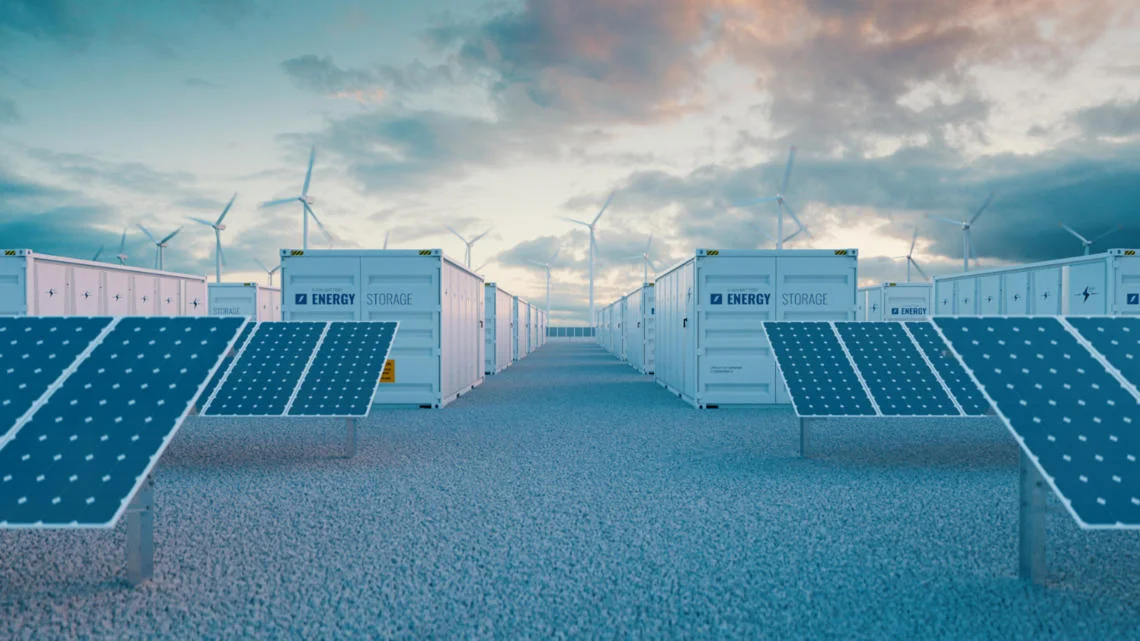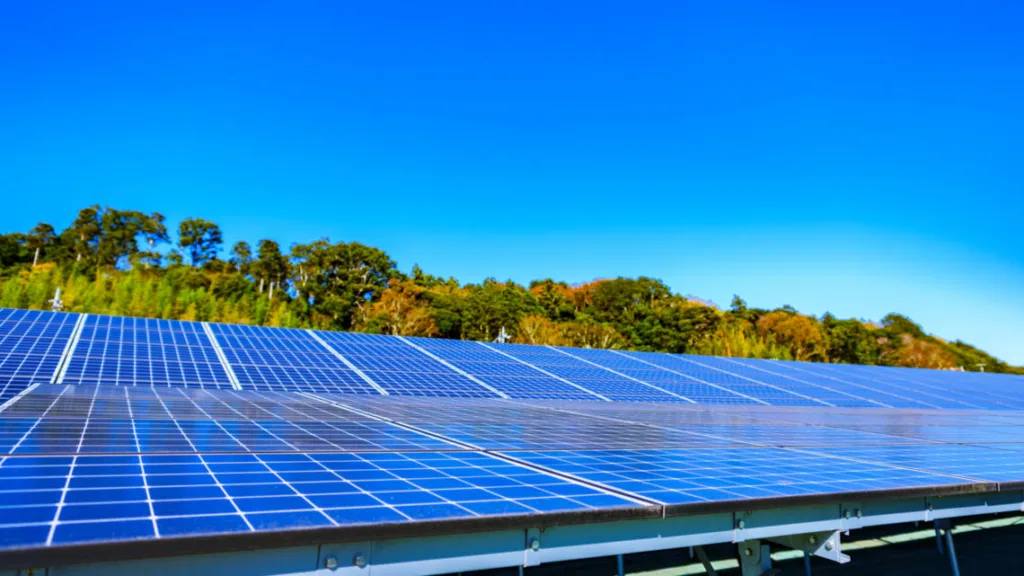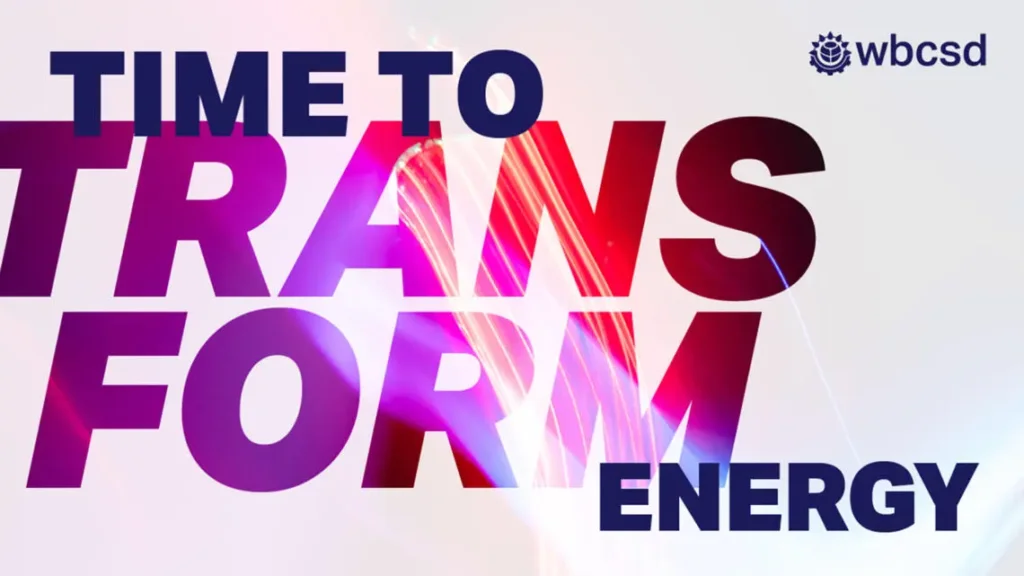Authors
Surbhi Singhvi, Manager, Energy Transformation, WBCSD
WBCSD has been at the forefront of supporting companies in accelerating the deployment of renewable power solutions through power purchase agreements (PPAs). As the world continues its transition to renewable power sources, the imperative for adaptable supply and demand within power grids is becoming the next key area of focus. This article delves into the future of an electricity grid with high shares of renewable power, and particularly looks at the role of businesses in integrating energy storage solutions (ESS) to increase grid flexibility. It offers valuable insights learned from our work in India to illustrate their commercial viability.
Businesses have a lot to gain from implementing ESS due to their ability to provide access to renewable power closer to the time of power consumption. ESS can specifically enable energy users not only to source a higher share of renewable power in their own portfolio and hence achieve their net-zero targets but also in getting closer to 24X7 sourcing of renewable power, which is key to ensuring grid flexibility.
The growing need for energy storage
The increasing adoption of renewable power resources is driving a remarkable transformation of the global energy landscape. According to the International Energy Agency (IEA), renewables are set to become the largest source of global electricity generation by early 2025. This highlights a significant milestone in the effort to achieve carbon-free power systems and limit the impact of the climate crisis.
In the realm of renewable power, the challenge lies in the intermittency of sources like sunlight and wind. As these resources depend on weather conditions, their availability fluctuates, making it difficult to manage a steady supply. In addition to this, the electrification of various sectors, including transportation and industry, increases variability in power demand. To address this, power grids need to adapt to become more flexible and accommodate the ebb and flow of renewable power generation. This transformation is pivotal in ensuring the steadfastness and resilience of our power systems as we progress toward a greener energy landscape.
According to experts, achieving a net-zero world by 2050 through the adoption of variable renewable power supply requires grid flexibility – the power system’s ability to respond to changes in supply and demand on an hourly basis – to quadruple. Based on the existing growth of renewables, major economies like the United States, the European Union, and China are projected to experience around 40% increase in flexibility needs by 2030, with India standing out with the largest projected increase of around 60%.
Solutions for balancing the future power system architecture include flexible power plants on the supply side, demand response and energy storage. Estimates forecast that energy storage can meet over 50% of the global power system’s flexibility needs by 2050, as it helps balance out supply variability while enabling greater consumption of self-generated renewable power by consumers and reduces the need to feed excess electricity back into the grid.
India’s energy storage revolution: a guiding light for global transition work
India is on the brink of an energy revolution. As the third-largest power consumer in the world, India’s government announced its ambitions to achieve net-zero emissions by 2070 and secure 50% of its electricity from renewable sources by 2030. The IEA predicts that India’s grid flexibility needs are the highest in the world as the country’s needs are fast evolving.
For ESS adoption to support grid flexibility, there are several regulatory and market barriers including high costs, lack of availability of power generation and consumption data at a granular level and inadequate market design. In this transition, India is a guiding light, as policy makers, regulators and businesses have taken progressive steps to accelerate the adoption of ESS.
- India’s regulations mandate that distribution utilities and commercial & industrial (C&I) consumers source 4% of their electricity from energy storage by 2030. This mandate provides the required initial demand signal for market development.
- To reduce the cost of battery energy storage systems (BESS), Indian policy makers have put in place a viability gap funding scheme with an envisaged development of 4 GWh of BESS projects by 2030-31. The objective is to make stored renewable power a commercially viable option for managing peak power demand across the country.
- The Resource Adequacy guidelines and Indian Electricity Grid Code (IEGC) put a renewed focus on integrating renewable power into sector planning and fulfilling resource adequacy using energy storage solutions. As per these, distribution utilities will develop a scientific integrated resource plan to have an adequate supply of generation or demand-responsive resources to serve expected peak demand reliably over the next 5-10 years.
- Several Indian companies including JSW Group and Tata Group are setting up renewable power projects clubbed with ESS to source round-the-clock power for their operations.
What have we learned from the applications in India?
WBCSD has been actively promoting the deployment of ESS to distribution utilities and C&I consumers in India. Our latest findings show that at current costs, it already makes commercial sense to adopt ESS for the following applications in India:
Peak load management
Managing periods of peak power demand on the grid, which happen for only a few hours in a year, is a challenging and costly endeavor. Coal-based power plants have conventionally been used to meet the peak load in India. Apart from their high carbon intensity, a drawback is their inability to frequently increase or decrease power generation to balance the need in real time. ESS, on the other hand, can efficiently store excess power generated during low demand periods and deploy this power almost instantaneously during peak hours to alleviate strain on the grid and avoid costly peak demand charges for C&I consumers and infrastructure upgrades for distribution utilities. ESS not only enhance grid stability but also contribute to its overall efficiency, promoting a more sustainable and resilient power ecosystem.
Diesel abatement
Frequent grid outages pose a significant challenge for numerous industries, leading to escalated expenses from the use of diesel generators or revenue losses due to production downtime. ESS pose an innovative and cost-effective alternative by storing renewable power for use during grid outages, substantially reducing dependence on diesel generators. By adopting ESS, companies can not only lower operational costs and complexities, but also shrink their carbon footprint, making strides towards sustainability and efficiency.
Other applications of ESS for distribution utilities and C&I users can be explored in detail in the full report.
The time for action is now
As we look to the future, energy storage stands as a pivotal ally in unlocking the true potential of renewable power. Businesses have a remarkable opportunity to lead the charge by embracing ESS. While governments lay the groundwork for ESS through policy and regulatory frameworks, businesses should start their analysis of business cases. By accessing and analyzing granular data on power consumption and generation and identifying suitable applications for ESS deployment, companies can learn to understand the commercial viability for ESS adoption, and how it can improve their bottom line while supporting in achievement of ambitious renewable power procurement targets. ESS, by increasing availability of renewable power, would also prove critical in decarbonization of energy sources beyond power by supporting production and use of green hydrogen and electrification of heating and cooling in industries and buildings.
Please contact singhvi@wbcsd.org in case of queries.
Outline




